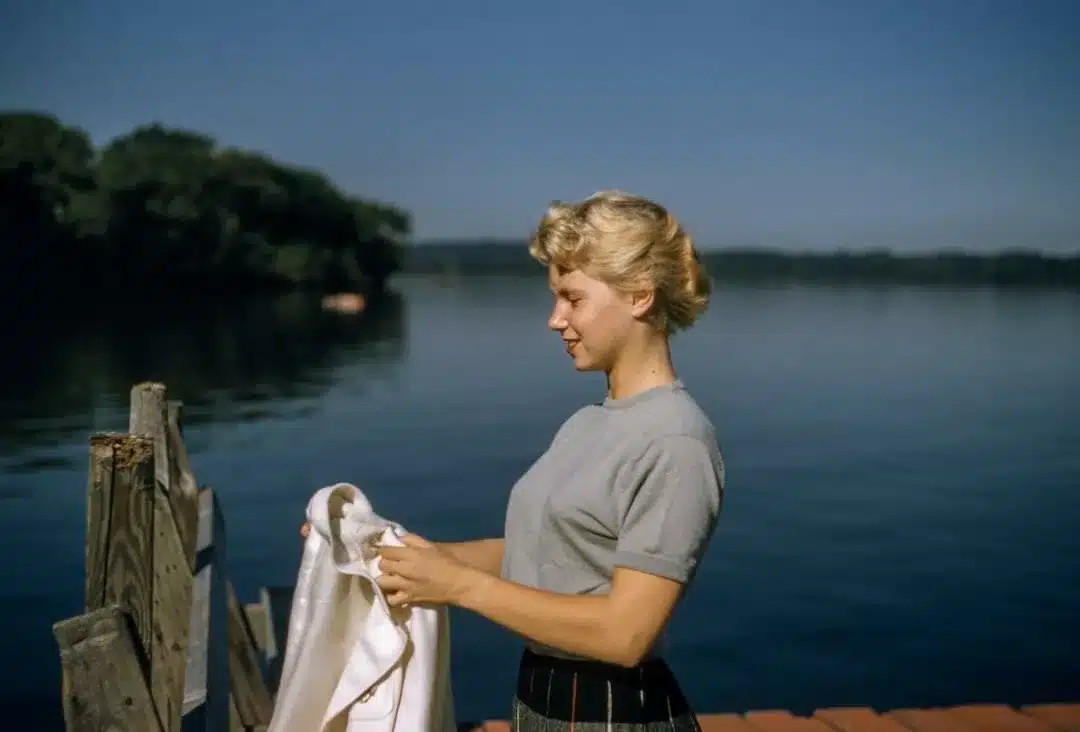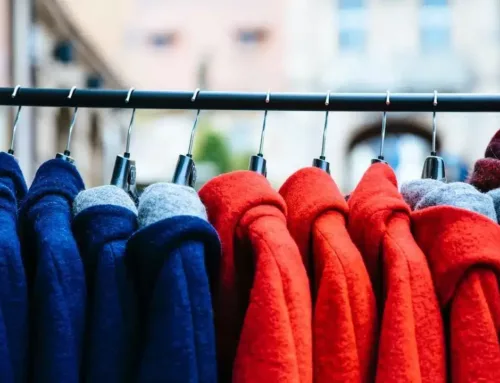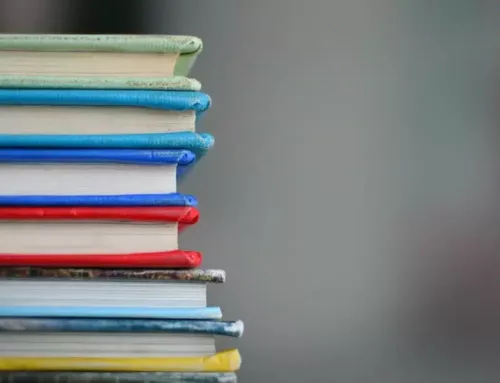Ever wondered how to get stains out of vintage clothes? Like trying to decode a cryptic message from the past, these stubborn spots can be tricky. Whether it’s an ink blot on your grandmother’s lace gown or oil smudges on that retro denim jacket, we’ve all been there.
You see, treating blemishes on such delicate and aged fabric is not just about cleaning; it’s like performing surgery with soap and water as your scalpel. You need finesse – precision even – but don’t worry! I promise you’re in safe hands.
This guide will offer up my best-kept secrets for tackling those unwelcome intrusions head-on without damaging your precious threads. We’ll cover everything from identifying mystery stains to dealing with more specific ones like blood and grease…even addressing stubborn culprits like makeup and wine!
Understanding the Basics of Stain Removal for Vintage Clothes
Vintage clothes are a treasure, but they often come with age-old stains. Let’s explore how to identify and treat these unwelcome marks.
Identifying Mystery Stains on Vintage Clothing
The first step in stain removal is figuring out what caused it. Look at the color and location; an underarm yellowing might suggest sweat while rust-colored spots near metal buttons point towards rust stains. But don’t worry if you can’t pinpoint the culprit – there are plenty of general treatments that work wonders.
Mystery or not, speed matters when dealing with stains on vintage clothing. Old ones tend to be stubborn, so fresh spills should get your immediate attention.
Preventing Dye Bleed in Vintage Garments
Dye bleeding can turn a laundry day into a disaster. To prevent colors from running amok during washing, use cold or cool water and wash items separately. This trick helps keep those vibrant vintage hues where they belong: on your garment.
Dealing with Specific Types of Stains on Vintage Clothes
Treating specific types of stains requires tailored strategies depending on their nature. Denise Brain, a seasoned vintage clothing enthusiast, offers excellent guidance here.
Removing Blood Stains from Vintage Clothes
Bloodstains have protein bases which makes them easy to remove unless exposed to heat- then they become permanent tattoos. The secret weapon? Cold water – lots of it.
Effective Removal Of Oil And Grease Stains
If oil has seeped into your favorite piece try using warm water mixed with a gentle dishwashing liquid or laundry detergent. It’s amazing how such simple household items can be heroes in stain removal.
Addressing Stubborn Stains on Vintage Clothes
No matter the vintage piece, stubborn stains are inevitable. But with some know-how and patience, you can tackle even the toughest ones.
Techniques for Removing Makeup Stains from Vintage Clothes
Preserving the integrity of vintage clothing often involves delicate care, especially when dealing with makeup stains. To successfully remove such blemishes without compromising the fabric’s authenticity, several techniques can be employed.
Begin by gently blotting the stain with a clean cloth or sponge to absorb excess makeup. Avoid rubbing vigorously, as it may exacerbate the issue.
For oil-based makeup, applying a small amount of dish soap or mild detergent to the affected area can help break down the stain. Alternatively, for water-based makeup, using a mixture of water and white vinegar can be effective.
Always test any solution on a discreet area first to ensure it won’t harm the garment. Patience is key, and one may need to repeat the process several times, gradually lifting the makeup stain without causing harm to the vintage fabric.
Mold and Mildew: The Silent Foes of Vintage Fabrics
Battling mold mildew? Don’t panic. First things first – take it outside so spores don’t spread indoors. Gently brush off loose dyes then soak clothing in equal parts hydrogen peroxide and cold water solution for about 30 minutes before rinsing thoroughly under cool water until no suds remain.
In case mold persists despite following these steps properly (especially if it’s black mold), do consider professional help i.e., a dry cleaner who specializes in treating such issues without causing more harm to delicate fabrics involved.
Perspiration Stains – No Sweat.
You’ll learn that perspiration or sweat stains can become yellow over time but can be fixed with a mixture of equal parts hydrogen peroxide and dish soap. Allow the garment to remain in this mixture for a minimum of 30 minutes before washing off, making sure all surplus water is taken away by dabbing with a dry cloth.
For tough underarm stains that have become yellow over time, you may need to repeat this process or try soaking the area in white vinegar diluted with water before washing as normal.
Key Takeaway:
Tackling stains on old-school attire isn’t too tough. Makeup smudges? An enzyme pre-soak or a warm detergent bath could be your saving grace – just don’t forget to do a spot check first. For mold and mildew, try hydrogen peroxide with cold water outside. Sweat marks might need some extra help: think about using hydrogen peroxide mixed with dish soap, or even white vinegar for those stubborn areas.
Treating Difficult Stains on Vintage Clothes
At City Thrift, we know that treating tough stains on vintage clothes can be a challenge. From yellow underarm staining to stubborn permanent marker marks, each stain requires a specific approach.
Eliminating Yellow Underarm Staining on Vintage Clothes
Nothing ruins the appeal of an excellent-condition vintage piece more than yellow underarm stains. But fear not. A simple solution of baking soda and hydrogen peroxide can come to your rescue. Make a paste with equal parts hydrogen peroxide and baking soda.
Gently apply this mix onto the stained area using an old toothbrush or soft cloth. Let it sit for at least 30 minutes before rinsing off with cool water.
You’ll need to perform a spot test in an inconspicuous area first though – you wouldn’t want any surprises when dealing with these treasures from thrift stores.
Removing Permanent Marker Stains from Vintage Clothes
Mistakenly used your favorite vintage item as a sketchpad? We’ve got some tips for you too. Lemon essential oil is known for its ability to remove ink effectively.
All you have to do is add a few drops directly onto the mark, then blot gently with white cotton or dry cloth until no more color transfers over.
In case lemon oil isn’t available, don’t worry – Magic Eraser might just work wonders here too.
Last-resort Tips: Dealing With Musty Odors And Suede Staining
If your vintage clothing has a musty odor or stubborn suede staining, don’t despair. Our last-resort tips can help you out.
For odors, air the garment outside but avoid direct sunlight which might fade the colors. For suede stains, it’s a good idea to take them to professional dry cleaners who have experience with vintage fabric.
Key Takeaway:
Handling tough stains on vintage clothes doesn’t have to be daunting. For yellow underarm marks, a paste of baking soda and hydrogen peroxide can work wonders. Use the lemon essential oil or Magic Eraser for permanent marker spots. If dealing with musty odors or suede staining, airing out the garment and seeking professional help are your best bets.
FAQs in Relation to How to Get Stains Out of Vintage Clothes
How do you get old stains out of vintage fabric?
Old stains on vintage fabrics can be tricky, but not impossible. Use a gentle detergent and cold water to wash by hand. For stubborn stains, use specific stain removers designed for delicate materials.
What is the best stain remover for vintage?
The best stain remover depends on the type of stain and fabric. Generally, mild soap, hydrogen peroxide or baking soda mixed with warm water work well for most vintage clothes.
Can you get years old stains out of clothes?
You might just luck out with age-old stains. Treat them using a mixture of dishwashing liquid and warm water then rinse thoroughly before air drying.
Can you get stains out of vintage shirts?
Absolutely. Soak stained areas in cool soapy water before gently scrubbing it off. Tougher ones may need a paste made from baking soda and vinegar applied directly to the area.
Conclusion
Cracking the code of how to get stains out of vintage clothes doesn’t have to be a daunting task anymore.
You’ve learned how identifying mystery stains can set you up for success, and that cold water is your best friend when it comes to preventing dye bleed. Blood and grease are not invincible; they can bow down before warm water coupled with dishwashing liquid or laundry detergent.
The tricks for dealing with stubborn makeup, wine, tea, or coffee stains? They’re now part of your stain-fighting arsenal too! Remember: an enzyme pre-treatment soak works wonders on these pesky spots.
Last but not least, never underestimate the power of baking soda mixed with hydrogen peroxide against yellow underarm staining…it’s almost magical!
Treating those precious vintage pieces isn’t about harsh scrubbing—it’s all about knowing which technique suits each stain type best. Armed with this knowledge, you’re well on your way to keeping those beloved garments in excellent condition!







Leave A Comment